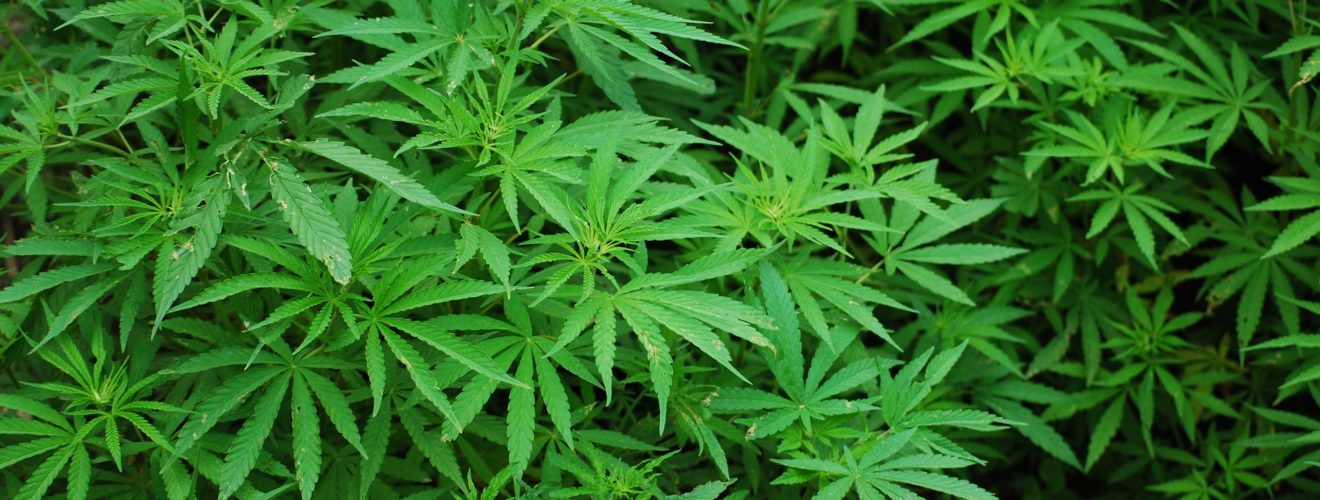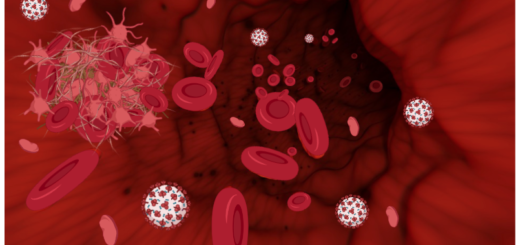High Time for a Rethink?

For decades, cannabis has been stereotyped as the recreational drug of stoners and hippies — kicking back by smoking a spliff, while listening to the reggae tones of Bob Marley. It has been associated with negative effects on mental health and lowering cognitive function. In many countries, it is a banned substance, making it illegal to grow, supply, or be in possession of. But times are changing. The medical use of cannabinoids is increasingly being legalised across the world. Since the early 2000s, 31 states in America — where it’s listed as a Schedule I drug side-by-side to LSD and heroin — have filed legislation allowing the prescription of medical cannabis for particular conditions, such as cancer and rheumatism. In multiple states of the US and in Canada, bills have recently been passed to legalise recreational cannabis. In the UK, the cannabis-based spray Sativex has been prescribed since 2006 for treatment of muscle stiffness and spasms in patients with Multiple Sclerosis. An artificial THC product, Nabilone, has also been given to cancer patients to relieve nausea during chemotherapy.
Whilst the drug is still a class B substance in the UK (possession of a class B drug can result in up to 5 years in prison, and supply and production up to 14 years), specialist doctors have been able to legally prescribe cannabinoids with THC as of November 2018. This came after a number of high-profile cases involving children being denied access to cannabis oil for the control of epileptic seizures. Charlotte Caldwell reignited the debate through the media after she travelled to Canada — where the drug has just been legalised for recreational use as of October this year — to buy the oil for her 12-year-old son Billy, only to have it confiscated on her return to UK soil. Over 25,000 Brits signed the petition to campaign for the legalisation of medicinal cannabis this year, arguing that government policy was inappropriate, ineffective, and out of date.
Cannabis is a plant-based product with origins tracing back to the ancient world. Cannabinoids are the chemical compounds that give the Cannabis plant its recreational and medical properties. Tetrahydrocannabinol (or THC),the best-known compound, is contained in the crumb-like, dried parts of the plant – known as marijuana. As the main psychoactive compound, THC has been the focus of most medicinal use and research to date. When ingested, it binds to receptors in the brain that control pleasure, time perception, and pain. Through this interaction, it boosts the production of what neuroscientists refer to as the “feel-good chemical”: dopamine. Cannabinoid derivatives bind to almost everything in the body, with cannabinoid receptors being expressed in every cell of the body. CBD doesn’t produce the psychoactive effects of THC, but is thought to have medical benefits, and is available as an over-the-counter medicinal product in the form of CBD oil.
Evidence suggesting the use of cannabinoids more than 5,000 years ago in what is now Romania has been described extensively 1. Marijuana tea is thought to have been prescribed in Asia and China as a pain medication for various illnesses, including gout and malaria around 2500 B.C. Throughout the Middle Ages, it was a popular drug in the Middle East and was integrated into folk medicine in Europe. Interestingly, although it was used to treat tumours, coughs, and jaundice, ancient physicians did warn against using cannabis excessively, believing that too much could cause harm. In more modern times, an Irish doctor, William O’Shaughnessy, championed the benefits of medical marijuana for rheumatism and nausea in England and America in the 19th century. It is only in the last one hundred years that governments have tried to control its use due to concerns over addiction and associated crime.
So, if the medical use of plant-based cannabis has been exploited for thousands of years, why is it such a controversial topic? Aside from the obvious and well-known risks of recreational drug use, regular recreational use of cannabis can increase the development of psychotic illnesses like schizophrenia, which is an even higher risk in young people, as cannabis interferes with the development of the brain (NHS, Royal College of Psychiatrists). Withdrawal can result in symptoms like mood swings, restlessness, and insomnia.
The truth of the matter is that the specific pain-relieving properties of cannabinoids are poorly understood, even now.
Pain is a complex thing and is a crucial evolutionally response to warn us of injury and keep us safe. By definition, pain is an unpleasant sensory and emotional experience associated with actual or potential tissue damage. At a sensory-motor level, pain can be thought of as a ‘raw’ physical feeling at the area where the injury or damage is made. Pain also provokes an emotional response called the ‘affective level’, which refers to a person’s perception and emotional reaction to the painful stimuli. This is where it gets complex. The affective level is very subjective. Each person learns the meaning of the word “pain” through their unique experiences of injury throughout their early life. As a result, the same pain stimuli, a needle prick on the index finger for example, may have a different affective level for two individuals differently. They would both feel the needle prick the finger, but one may experience an intense emotional dislike whereas the other may experience less unpleasantness or even be entirely unphased. As such, measuring pain is extremely difficult, and there is no physiological, imaging or laboratory test that can measure pain. In medicine, pain is reported the way the patient describes it.
Forming an understanding of the mechanisms to reduce or relieve pain is equally complex as pain itself and is still a work in progress. Whilst the affective and sensory levels are closely tied, they can be affected separately. Much research has been done into altering the perception of pain at the affective level. ‘Snowworld’, developed by researchers at the University of Washington Human Interface Technology Laboratory to help burn victims, is one of the most well-known studies of this kind 2. For burns victims, the healing process can be excruciatingly painful. Wounds must be regularly cleaned, checked, and re-dressed by nurses. Using a virtual reality headset during wound care, patients can be immersed into a snow themed game where users score points by throwing snowballs at snowmen, penguins, woolly mammoths, and flying fish. By intercepting the brains conscious experience of pain through distraction, Snowworld has been shown to significantly reduce subjective pain and associated anxiety for these patients. Whilst cannabinoids likely tap into a different mechanism to alleviate pain symptoms, this example demonstrates the complexity of the pathway and of the brain’s response to pain stimuli.
With increased legalisation and growing interest in the role of medicinal cannabis for pain management, robust scientific research into the analgesic properties and effects of the drug on pain is in demand. Martin De Vita and a team of researchers from Syracuse University College of Arts and Science in the USA recently published a highly anticipated paper on the subject in JAMA Psychiatry 3. In the first study of its kind, they conducted a systematic review and meta-analysis of experimental research into the effects of cannabis on pain. After collecting papers on over 1830 experimental pain studies in North America and Europe over a 40 year period, they whittled them down to 18 studies and extracted data from over 440 adult participants. Despite being widely used in pain relief and endorsed by patients for its pain alleviating effect, the studies produced mixed findings on the analgesic mechanism
Drawing together all of the evidence from the studies, De Vita and his team concluded that the drug does not appear to reduce the intensity of experimental pain but instead, makes pain feel less unpleasant and more tolerable. In other words, the use of medicinal cannabis appears to cause a reduction in perceived unpleasantness of painful stimuli and emotional response rather than on the mechanical, sensory component of pain. They observed only a modest increase in pain threshold and no association with the reduction in intensity of ongoing pain. There was no reduction of heightened pain sensitivity (known as mechanical hyperalgesia) at a sensory level.
The reviewers concluded that as well as the pain-relieving effect being driven by an affective rather than a sensory component, cannabis may also prevent the onset of pain by producing small increases in pain thresholds. Interestingly, though, this effect might not stretch to reduce the intensity of pain already being experienced.
The results of De Vita’s study lay the starting blocks for characterising how cannabinoids affect pain mechanism, but there is still a lot to learn, and high-quality data in clinical and neuropathic pain is yet to be established. Whilst the recent legalisation of cannabinoids was intended to ensure that patients have access to the most appropriate course of medical treatment, it might also mean that the analgesic properties of the drug can be better explored by easing some of the legal and ethical barriers to clinical investigations.
This article was specialist edited by Tuuli Hietamies and copy-edited by Madeline Pritchard.
References
- Zlas, J., Stark, H., Seligman, J., Levy, R., Werker, E., Breuer, A. and Mechoulam, R., 1993. Early medical use of cannabis. Nature, 363(6426), p.215.
- Hoffman, H.G., Garcia-Palacios, A., Patterson, D.R., Jensen, M., Furness III, T. and Ammons Jr, W.F., 2001. The effectiveness of virtual reality for dental pain control: a case study. CyberPsychology & Behavior, 4(4), pp.527-535.
- Martin J. De Vita et al. 2018 Association of Cannabinoid Administration With Experimental Pain in Healthy Adults A Systematic Review and Meta-analysis. JAMA Psychiatry, DOI: 10.1001/jamapsychiatry.2018.2503










